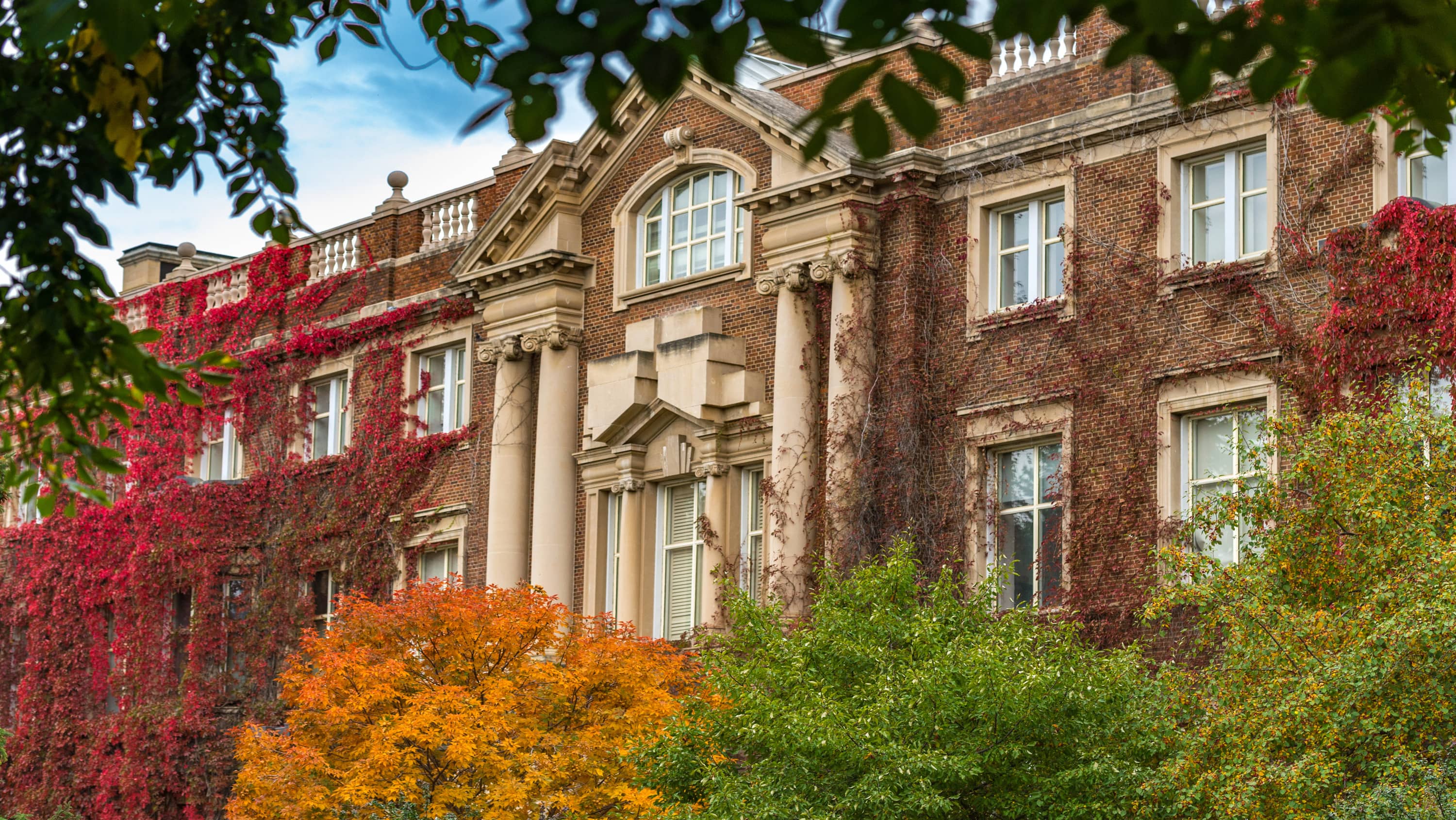Growing the University of Alberta’s enrolment to 60,000 students within the next 10 years is at the heart of an aspirational strategic plan to expand the global impact of the province’s flagship post-secondary institution over the next decade.
Shape: The University Strategic Plan 2023-2033 builds on the successes the university has achieved over its 115-year history and charts a course for action across the three pillars of its mission: education, research and community engagement.
“Our strategic plan outlines a bold and determined vision that will propel the University of Alberta to even greater heights,” said U of A president Bill Flanagan at a launch event today at the Timms Centre for the Arts.
“With this plan as our guide, over the next decade we will shape futures by educating with purpose. We will shape ideas by being purposeful in our research. And we will shape trust by engaging meaningfully with our communities, partners and the people who make up the University of Alberta.”
Boosting enrolment, rising in rankings
The university aims to expand enrolment by more than 35 per cent — from 44,000 students now to 50,000 by 2026 and 60,000 within the next 10 years, according to the plan. The shift is needed to meet the challenges of a growing young population and rising demand, noted Flanagan.
“This represents an additional 16,000 students — 6,000 of whom will be international students from around the world,” he said, adding that more than half of those international students will likely stay in Alberta after graduating, "contributing to a growing and ever more diverse province.”
Increasing enrolment at this scale could generate a projected $400 million in new annual revenue for the university, which would be targeted to strategic investments in teaching and research, “including hiring the faculty and staff we will need to ensure an outstanding learning experience for all of our students,” Flanagan said.
In tandem with this planned growth, the strategy calls for continuing the university’s upward trajectory in global rankings, setting an ambitious goal of ranking among the top 50 research universities in the world and among the top three in Canada by 2033.
This year, the U of A placed 91st in the world and fourth in Canada in the Academic Ranking of World Universities — its best performance in the history of the influential rankings. It was ranked seventh in the world in Times Higher Education’s 2023 Impact Rankings of universities making progress toward the United Nations’ 17 Sustainable Development Goals for 2030. And it was ranked the best place in Canada to study nursing and petroleum engineering according to the 2023 QS World University Rankings by Subject, with 18 subjects ranking among the global top 100.
Focusing on research priorities
The plan identifies three priority research areas in which the university has proved to be a global leader: energy and the environment, artificial intelligence, and health and well-being.
On the energy front, the U of A is home to Future Energy Systems, a research group developing innovative technologies in biomass, hydrogen fuel cells, geothermal, solar, wind and smart grids. Last month, deputy director Amit Kumar, a leading expert on energy systems and key contributor to Alberta’s Hydrogen Roadmap, was named Canada Research Chair in Assessment of Energy Systems.
The university has been a leader in artificial intelligence since establishing Canada’s first computing science department in 1964 and now ranks second in Canada for AI research, according to the U.S. News Best Global Universities for Artificial Intelligence. The U of A’s broad base of expertise continues to expand with new faculty members and Canada CIFAR AI Chairs shaping the impact of the rapidly evolving technology and examining its ethical implications.
The U of A’s globally recognized contributions to health research include advances in diagnosis and treatment for hepatitis B and C, vaccines and antiviral drugs against COVID-19 and other viruses, and women and children’s health research. Since 2010, the university has been home to the Li Ka Shing Institute of Virology, which brings together world-leading researchers including founding director Lorne Tyrrell and 2020 Nobel laureate Michael Houghton, director of the Li Ka Shing Applied Virology Institute.
“Over the next decade we will increase multidisciplinary research, develop innovations that address some of the world’s most pressing challenges, and increase representation and success among researchers from historically under-represented and equity-deserving groups,” said provost Verna Yiu, who led the steering committee that oversaw the plan’s development.
Growing opportunities for global impact
The strategic plan also notes three areas in which the university is making major contributions with the potential for global impact within the next decade: Indigenous research, agriculture and food, and social transformations — all of which will also be guided by other institutional strategies including the Braiding Past, Present and Future: Indigenous Strategic Plan, the Institutional Strategic Plan for Research and Innovation and the Strategic Plan for Equity, Diversity and Inclusivity.
Flanagan said the U of A’s reorganization of its academic faculties into three colleges in 2021 — the first post-secondary model of its kind in Canada — will give researchers more opportunities to collaborate with peers in other disciplines.
“Leveraging our new college structure, we will develop and deliver programs that transcend traditional disciplinary boundaries,” he added.
A collective vision
“[The plan] reflects the collective efforts and thoughtful feedback of innumerable faculty, staff and students along with a broad cross-section of alumni, community, industry and government partners,” notes Flanagan in his preface to the strategic plan.
“People are our greatest strength and they are at the very heart of what we do,” said Yiu.
“To make lasting, meaningful impacts on people’s lives, we must take intentional steps to support the people of our university and create a culture where everyone can achieve their full potential,” she added.
“We have a commitment to build a university of tomorrow for students, educators, researchers, alumni and community partners, here in Alberta and around the world. And this plan will get us there.”
